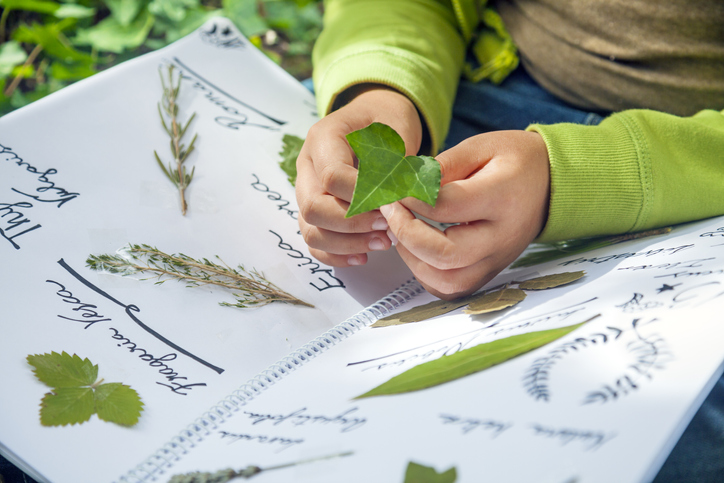Science Notebooks
Science and Literacy Connections: Part 2
Written by: Tracy Lavallee, Exemplars Science Consultant
Science is a wonderful way to integrate many other content areas and skills. It naturally lends itself to bringing in more reading and writing (as well as math!). After all, literacy is inherently a large part of what scientists do. There are so many different ways to integrate this, it can be hard to know where to start!
In this blog, we are going to begin with science notebooks.

Science notebooks offer a place for your students to record their observations and thoughts about what they’re learning about in class. They can also use them to jot down procedures and data as well as any conclusions they come to.
And not only are science notebooks a valuable way for students to communicate their learning and share it with others, they also offer an opportunity for teachers to informally assess student growth and learning.

Getting Started With Science Notebooks
So what exactly should students write in their notebooks? Anything and everything!
A science notebook is kind of like a learning diary that can lead them to better understanding the “big ideas and concepts” of science. Students can write freely: from ideas and reflections to diagrams and conclusions. And it gives them a place where language, data, and experiences work together to form meaning—building. It builds their written fluency as well as their scientific thinking and understanding. The best part is, information can usually be personalized in some way. By making these personal connections, students begin to challenge prior misconceptions they may have, and start to develop a conceptual understanding of the scientific phenomena they are exploring in their investigations.
What should science notebooks include?
A notebook can follow some general organization, but the content will vary from student to student. Try to honor this and not give students a long list of what they need to include. This often stifles their learning and can feel overwhelming to those who struggle with writing.
Science notebooks can be modeled after the way scientists really work, and each student's notebook can be unique to that individual, area of inquiry, type of experiment, and investigation. In it, student scientists can record their observations, ideas, drawings, and other illustrations such as charts, tables, models, and graphs, along with their questions, ideas, and reflections—like a running record of their thinking and learning.
For younger students or for students for whom writing can be difficult, you can use writing frames or prompts to help get them started. You can post them in the classroom or have students put a copy in their notebooks to use. Here are some examples:
- I notice, I wonder, I think ...
- We are trying to find out …
- This is what we did ...
- We made it a fair test by ...
- My diagram/sketch ...
- My data shows...
- This reminds me of ...
- I learned that ...
- I know this because ...
- My/our evidence is ...
Science notebooks can also support differentiated instruction for ESL students through the use of a more open format and other strategies such as tapping into prior knowledge, using the five senses, social interaction in groups, and language support.
The use of visual entries such as drawings, charts, graphs, diagrams, and models allow students to make notebook entries even if they’re struggling with written communication. Teachers can help by scribing what students say related to their visual representations. Vocabulary words can be included to help students, once they understand the meanings and relevancy to the science they are learning.
For older students, it’s fine to scaffold ways for them to organize their observations and data as long as eventually they begin to create their own strategies for recording their ideas. As the year progresses, science notebooks will evolve and become more detailed and complex as students learn and practice how to collect and record different types of data and to provide clear evidence-based statements. Students will eventually begin to create more authentic entries that make sense to them.
Source: Teaching Channel
How to Create a science notebook
There are many ways to make science notebooks: in a composition book, a spiral notebook, a three-ring binder with loose leaf paper and section dividers, or a folder with loose leaf paper.
For younger students, we recommend using paper that is half-lined and half-open for their drawings and diagrams. Let your students decorate their notebooks and make them uniquely their own.
The Benefits
Science notebooks help students engaged in active science make sense of the phenomena. Their data, based on their experiences and observations, are the raw materials that students use to build concepts, make connections, and observe relationships.
Why not give it a try?
Have questions? We’re here to help.
Let Exemplars guide you as you bring more science and literacy into the classroom. (All of our investigations include literacy connections!)


